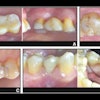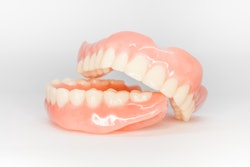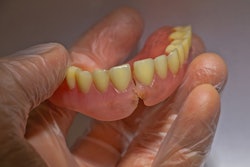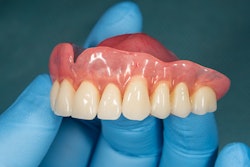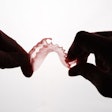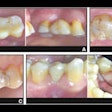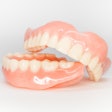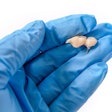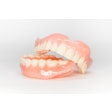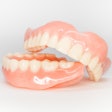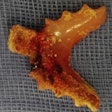
When it comes to dentures, it's paramount that they fit properly, because if they don't, it could lead to various biological complications such as denture stomatitis, epulis fissuratum, and even progressive bone loss, according to experts.
 Dr. Ronni Schnell of Boston University.
Dr. Ronni Schnell of Boston University."Bad dentures not only make patients unhappy, but they can also create long-lasting damage to the patient's underlying bone," Dr. Ronni Schnell, a clinical professor of general dentistry at Boston University who has been lecturing about dentures for more than 40 years, said. "When dentures fit badly, they put pressure on the underlying bone, and pressure leads to movement. Movement leads to bone resorption."
Not only that, if the denture doesn't fit properly, it can create sore spots and cause gagging. In those cases, the patient will remove the dentures, not wear them, or default back to a previous pair, which defeats the purpose of getting fitted for new ones, she added.
Dr. Young Kwang Kim, a clinical assistant professor of prosthodontics at New York University (NYU) Dentistry said, "Regardless of treatment, patient care should always strive to maximize its quality of care, whether we, clinicians, pursue full-arch implant rehabilitation or removable complete dentures."
How to properly fit dentures
Creating a proper fit for dentures requires more appointments compared to other procedures, because prosthodontists are recreating a patient's smile, bite, or function much of the time from scratch. It's essentially a full-mouth reconstruction; however, unlike a single crown or a bridge, a denture replaces not only some or all of a patient's teeth, but it sits on soft tissue, according to Schnell.
Some of the soft tissue is lost over the years from not having teeth anymore, so dentures are doing double duty: replacing lost teeth but also accommodating and considering the loss of the soft tissue.
Dentures usually require two sets of impressions and then one or two fittings, depending on the fabrication technique. The traditional method of using wax requires more fittings, whereas digital techniques can combine several steps to shorten a patient's visit. However, the clinical records and measurements remain the same regardless of the fabrication technique.
"The measurements have to stay the same because you're treating an analog patient, if you will," Schnell said.
The clinical records include x-rays, an intraoral exam, and an extraoral exam. Prosthodontists also examine the muscles located on the outside of the mouth to ensure they're healthy and review the medical and dental history of the patient to formulate a treatment plan, including the type of dentures to be made.
Testing sibilant sounds
After all the measurements are taken, patients are given a prototype denture with their desired teeth size and shape. The trial dentures can be set in wax, 3D printed, or milled. The prototype visit is critical, because it allows the patient to see what the denture will look like when they smile, and it allows the prosthodontist to make sure the fit is accurate and the teeth come together properly.
Not only is the dentist checking to see that teeth are hitting at the same time, but they're also looking for the vertical dimension of occlusion. Is the jaw coming together evenly? Are the jaw bones parallel to one another and approximately where they need to be so the mouth is perfectly aligned?
"The key to creating a great restoration begins with knowing how to create a great bite rim," Schnell added.
The first fitting is done with wax and a base plate; that fitting simulates where the teeth will go. This step allows the dentist to move the wax to the position where the former teeth were.
"We use things like the patient's musculature and their anatomy in order to guide where the teeth once were and where they will be now in the future," she said.
After the dentist finishes their measurements, the patient is asked to speak. If a patient can't speak well, they can't swallow, and if they can't swallow, they can't breathe, and if they can't breathe, they can't live, Schnell said.
Specifically, prosthodontists will check for fricative sounds, or "F" sounds, such as "44" and "55." Doing so allows them to see if the edges of the patient's upper front teeth are ending up on the vermilion border of the lip. If the upper front teeth are too long, the patient won't be able to form those sounds properly. In such cases, dentists would shorten the wax rim until the fricative sounds can be enunciated clearly by the patient.
Other sounds are checked as well. The sibilant sounds, or "S" sounds, such as in the words "66" or "Massachusetts," as well as other words such as "church" and "jelly," also help the prosthodontist determine how far apart the jaws must go. If the teeth are too long, the jaw can't sufficiently close to enunciate these words, which again requires adjusting the wax rim until sibilant sounds become clear.
Every point of the denture fitting process must be verified, according to Kim. That entails completing the following steps:
- Custom tray fabrication: Carefully designing and fine-tuning the dentures to fit the patient's unique features of anatomical vestibular anatomies.
- Border molding: Using available materials and proper techniques to capture the dynamic tissue of border movement.
- Final impression: Following the border movement using an elastomeric impression.
- Laboratory process: Considering possible discrepancies, such as gypsum stone expansion and acrylic shrinkage, which can occur once the dentures are made.
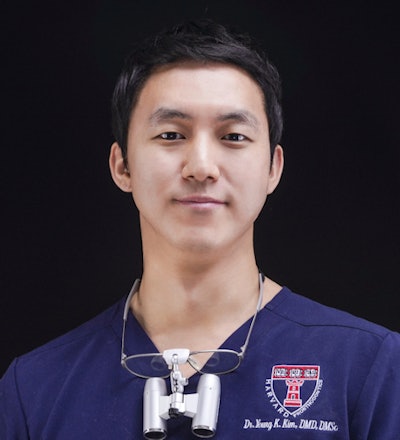 Dr. Young Kwang Kim of NYU Dentistry.
Dr. Young Kwang Kim of NYU Dentistry."Many clinicians, including my students, often tend to underestimate the critical importance of a well-fitting custom tray, which may lead to an overextended flange and/or improper intimacy of dentures," Kim said. "As its name illustrates, we should absolutely customize the tray, which is the initial prerequisite of the ideal denture fabrication process."
A proper fit not only ensures a perfect bite on the day of denture insertion, but it is also critical for follow-up visits, according to Schnell. Another visit or two for corrections is a normal part of adjusting new dentures.
"Especially if the patient is not a regular denture wearer, the denture needs to 'settle,' and the bite will change," she said. "More than 90% of patient complaints, even if it's a sore spot on the gums, is more related to the patient's bite than anything else."
Before a dentist grinds the denture base, they should check the bite first very carefully, because often, the issue is a malocclusion, she added. After that, encourage the patient to attend regular visits to check the gum tissues and the bone for changes. Dentures need realigning anywhere from every one to five years depending on how quickly the bone is resorbed, according to Schnell.
As Kim said, "Following appropriate foundational principles and technical and clinical steps, well-fitting dentures should be certainly feasible, and our patients deserve it."


